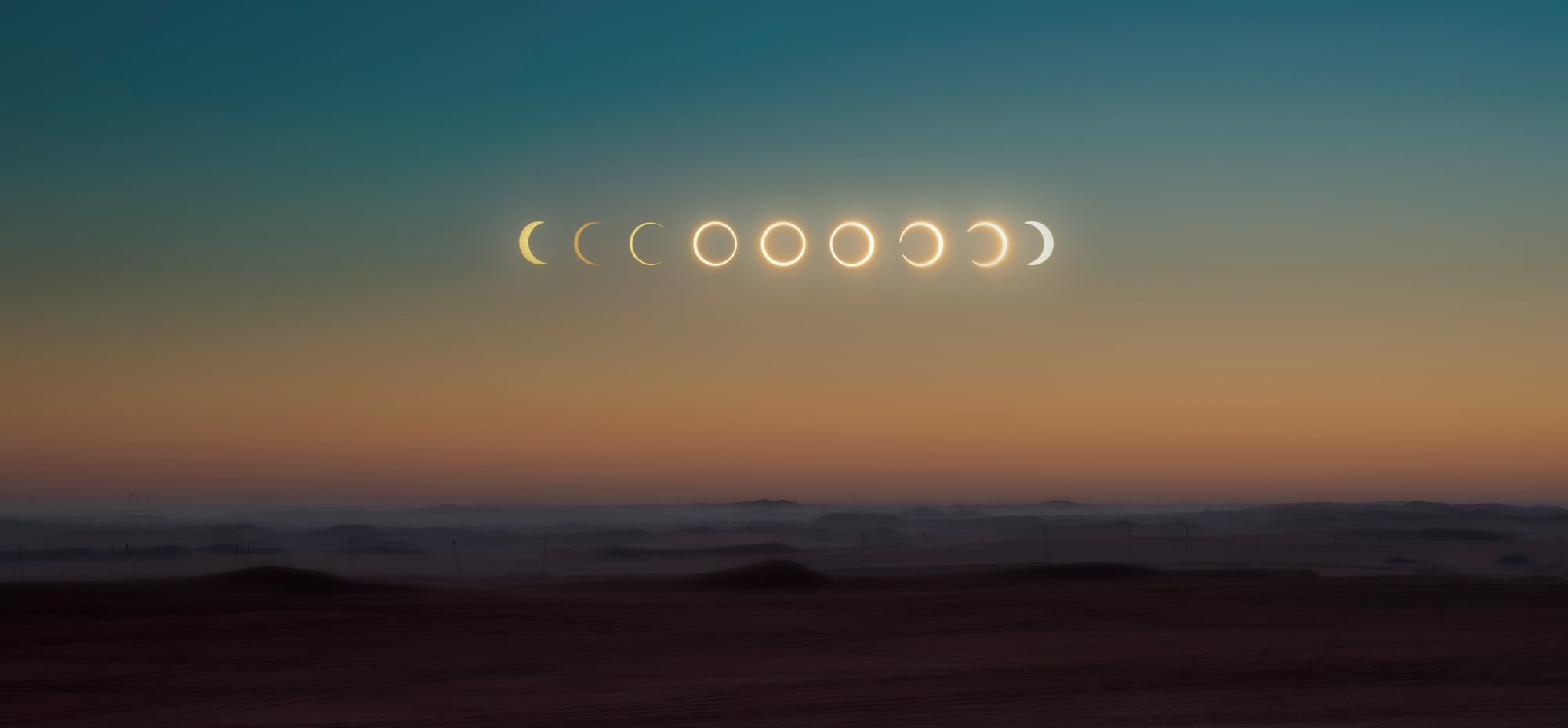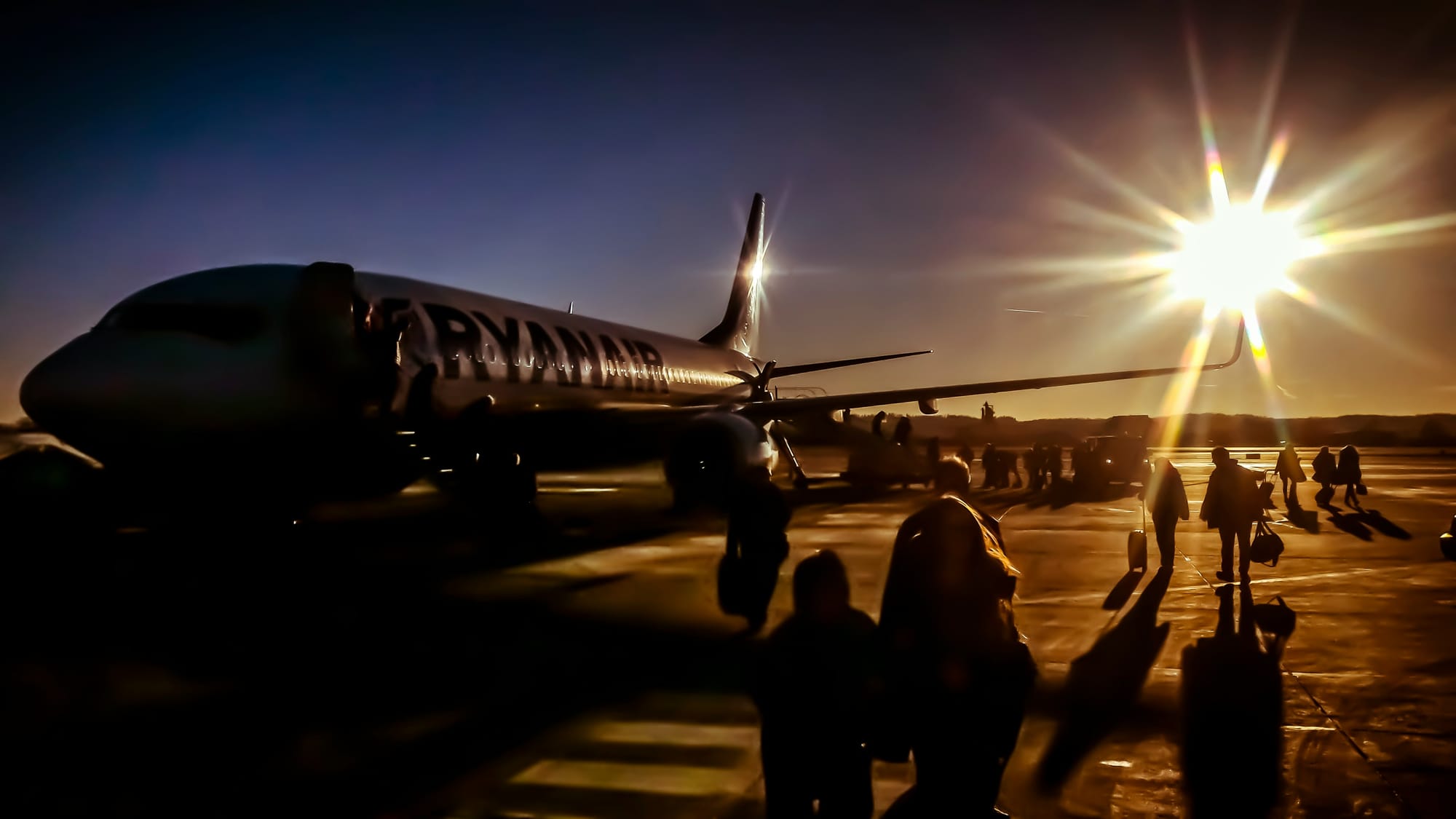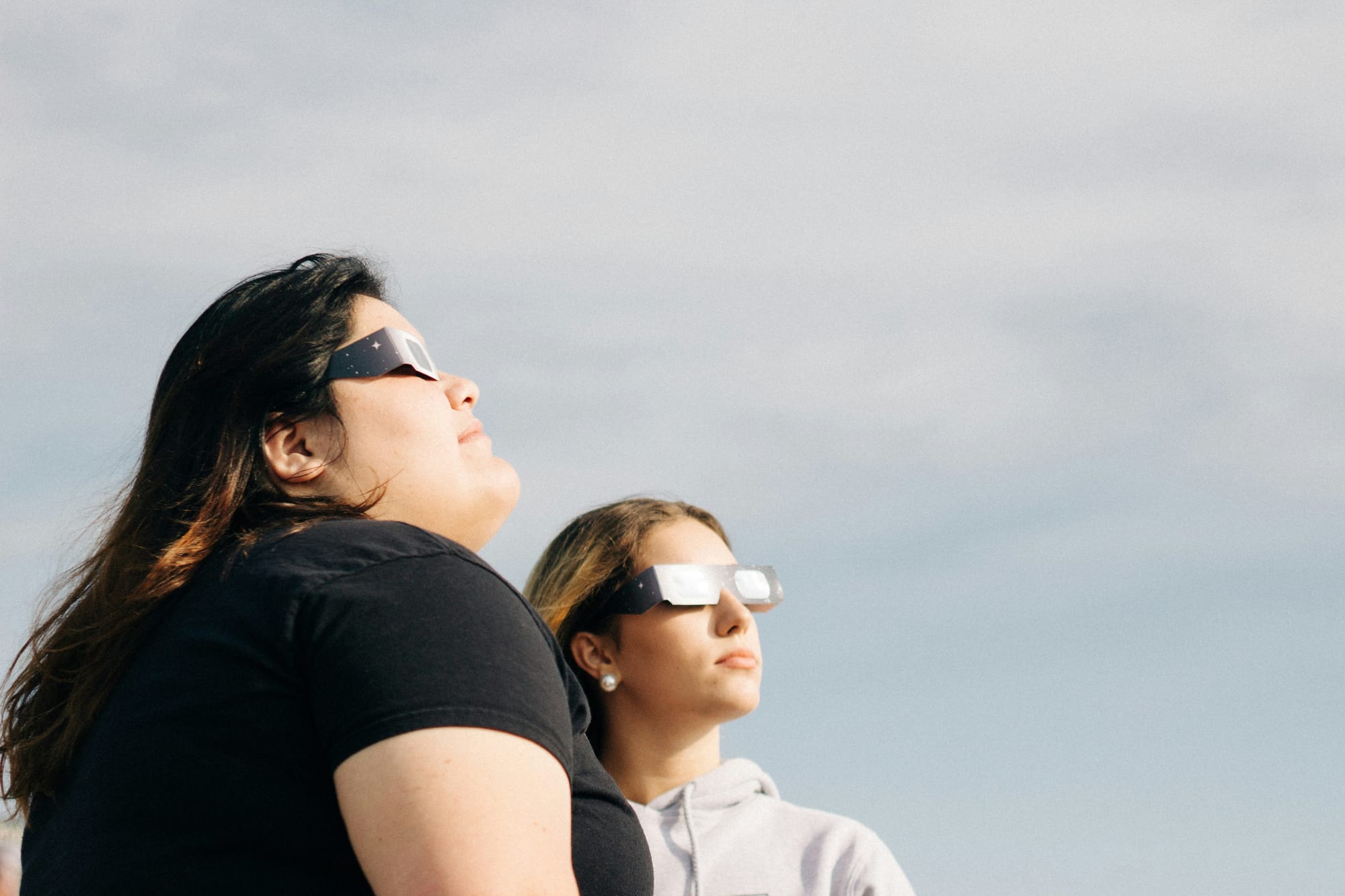Soaring Through Darkness: How Solar Eclipses Impact Aviation

Aviation and astronomy might seem like distant fields, but they can brush paths during a fascinating celestial event: a solar eclipse. Let's explore what a solar eclipse is, how often they occur, and the potential impact they can have on air travel.
What is a Solar Eclipse?

A solar eclipse occurs when the Moon passes directly between the Sun and Earth, casting a shadow on our planet. Observers within the path of this shadow witness the Sun being partially or completely obscured by the Moon. There are three main types of solar eclipses:
- Total: The Moon entirely blocks the Sun's light, creating a brief period of twilight-like darkness.
- Partial: The Moon only covers a portion of the Sun's disc.
- Annular: The Moon appears smaller than the Sun, leaving a bright ring of sunlight around its dark disc.
If you're in the path of totality on April 8th, then you will witness a "Total" eclipse!
Frequency of Eclipses

Solar eclipses happen relatively frequently. On average, we see at least two and no more than five solar eclipses in a year, but witnessing a total eclipse from a specific location is much rarer, occurring on average every 375 years.
After April 8th, 2024 the next total eclipse over the United States will be in the year 2044. Between now and then there will be other eclipses around the world but it's surprising how long we will have to wait for the next one.
Impact on Aviation

While solar eclipses are a marvel to behold, they can pose some challenges for aviation.
- Visibility: During a partial eclipse, pilots might experience temporary periods of reduced visibility, especially during critical takeoff and landing phases. Not to mention the need to want to view the eclipse.
- Temperature: A total eclipse can cause a sudden drop in temperature, which can affect aircraft performance, particularly at high altitudes. Colder temperatures are generally better for engines, but anything too cold and fuel can freeze. Once the eclipse is over, there will be a sudden surge in heat, which can reduce engine performance.
- Air Traffic Control: Depending on the severity of the eclipse, air traffic control procedures might be adjusted to ensure safety. There will be a lot of aircraft in the path of totality trying to view the eclipse. This can congest certain parts of the air traffic control system. We will likely see the FAA trying to manage this surge of commercial and private aircraft traffic.
Safety Tips for Viewing a Solar Eclipse

Never look directly at the Sun, even during an eclipse. The Sun's intense light can permanently damage your eyes. Here are some safe viewing methods:
- Eclipse glasses: Invest in specially designed eclipse glasses with certified filters that block harmful solar radiation.
- Solar projection: Project the Sun's image onto a white surface using a telescope or binoculars with a solar filter.
- Livestreams: Many observatories and organizations offer live streams of solar eclipses, allowing you to witness the event safely.
And I feel like I need to mention this again:
DO NOT LOOK DIRECTLY AT THE SUN!
Final Thoughts
Today, April 8th, will likely be quite the viewing experience, with millions of people looking up at the sky wanting to see the eclipse pass overhead. It will be a special treat for those who managed to get on dedicated flights for the eclipse and will likely get a very unobstructed view when it happens. Enjoy, and stay safe.





